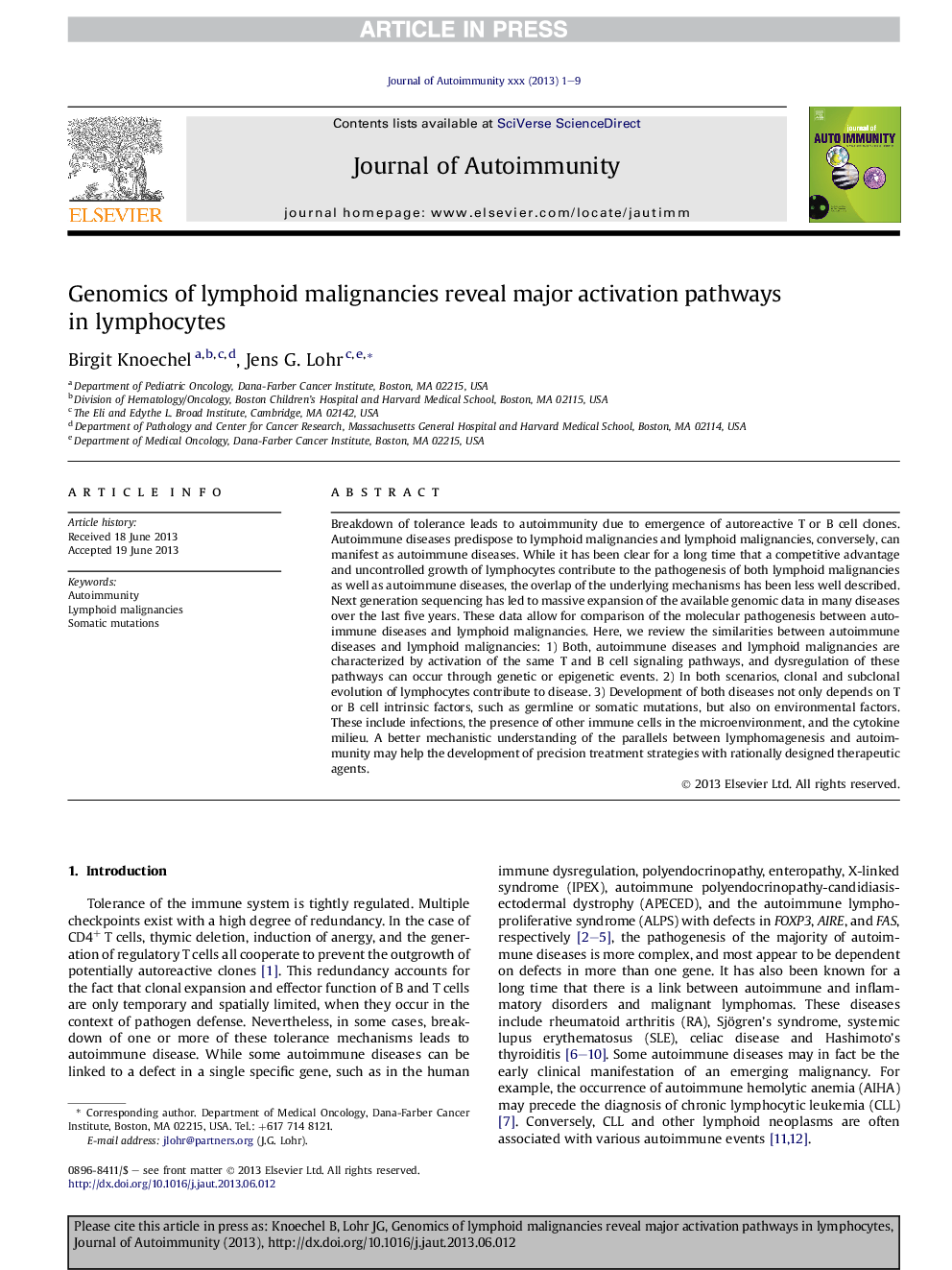| Article ID | Journal | Published Year | Pages | File Type |
|---|---|---|---|---|
| 6119316 | Journal of Autoimmunity | 2013 | 9 Pages |
Abstract
Breakdown of tolerance leads to autoimmunity due to emergence of autoreactive T or B cell clones. Autoimmune diseases predispose to lymphoid malignancies and lymphoid malignancies, conversely, can manifest as autoimmune diseases. While it has been clear for a long time that a competitive advantage and uncontrolled growth of lymphocytes contribute to the pathogenesis of both lymphoid malignancies as well as autoimmune diseases, the overlap of the underlying mechanisms has been less well described. Next generation sequencing has led to massive expansion of the available genomic data in many diseases over the last five years. These data allow for comparison of the molecular pathogenesis between autoimmune diseases and lymphoid malignancies. Here, we review the similarities between autoimmune diseases and lymphoid malignancies: 1) Both, autoimmune diseases and lymphoid malignancies are characterized by activation of the same T and B cell signaling pathways, and dysregulation of these pathways can occur through genetic or epigenetic events. 2) In both scenarios, clonal and subclonal evolution of lymphocytes contribute to disease. 3) Development of both diseases not only depends on T or B cell intrinsic factors, such as germline or somatic mutations, but also on environmental factors. These include infections, the presence of other immune cells in the microenvironment, and the cytokine milieu. A better mechanistic understanding of the parallels between lymphomagenesis and autoimmunity may help the development of precision treatment strategies with rationally designed therapeutic agents.
Related Topics
Life Sciences
Immunology and Microbiology
Immunology
Authors
Birgit Knoechel, Jens G. Lohr,
